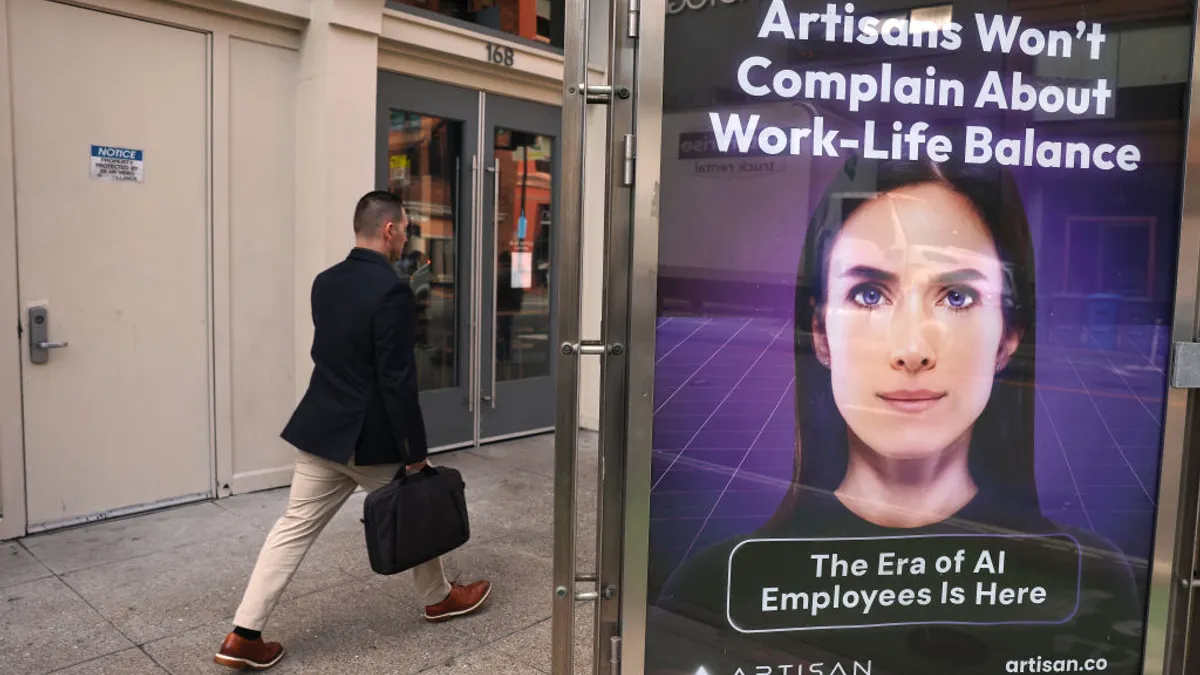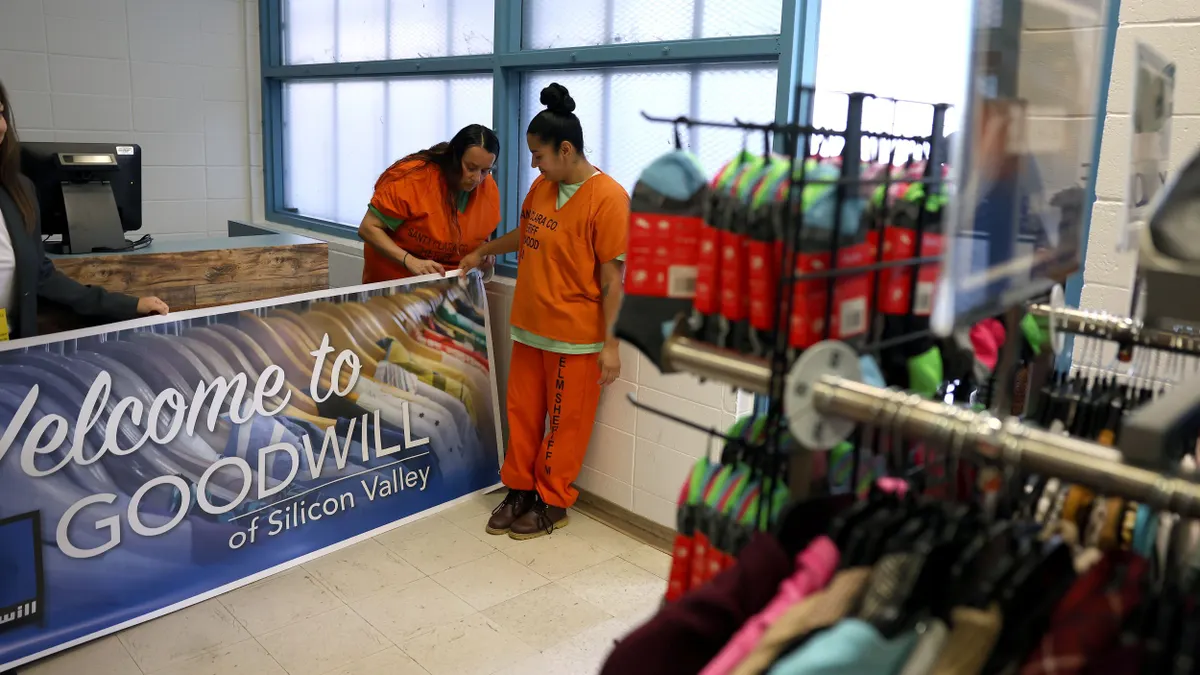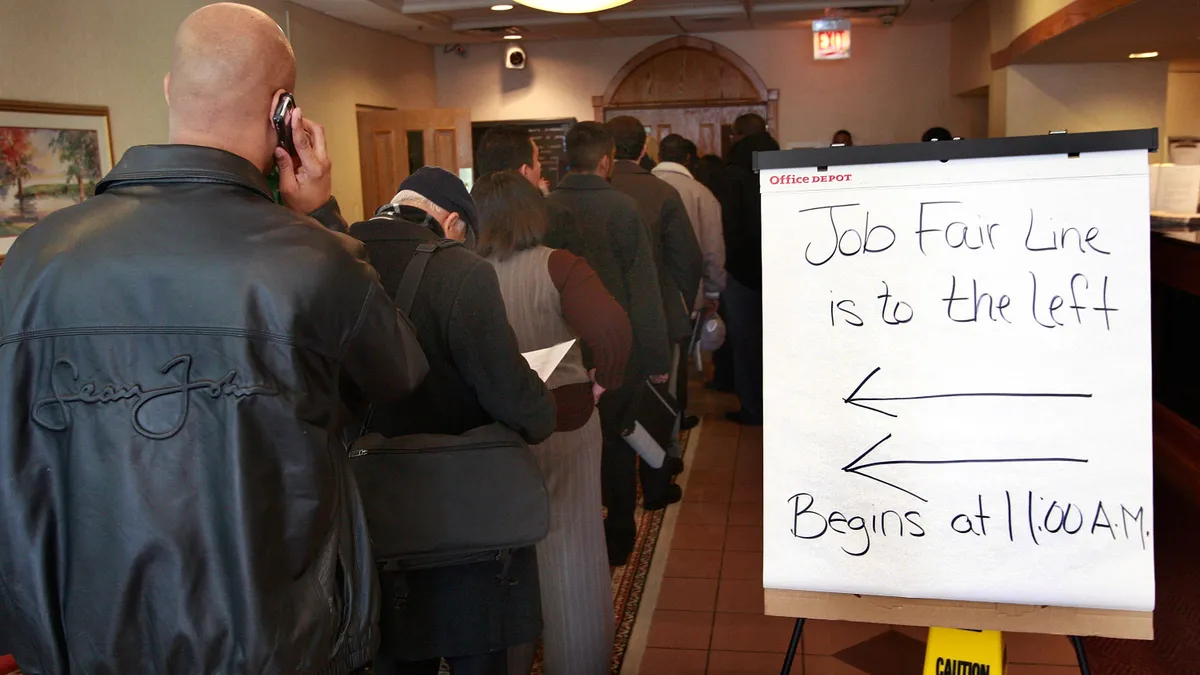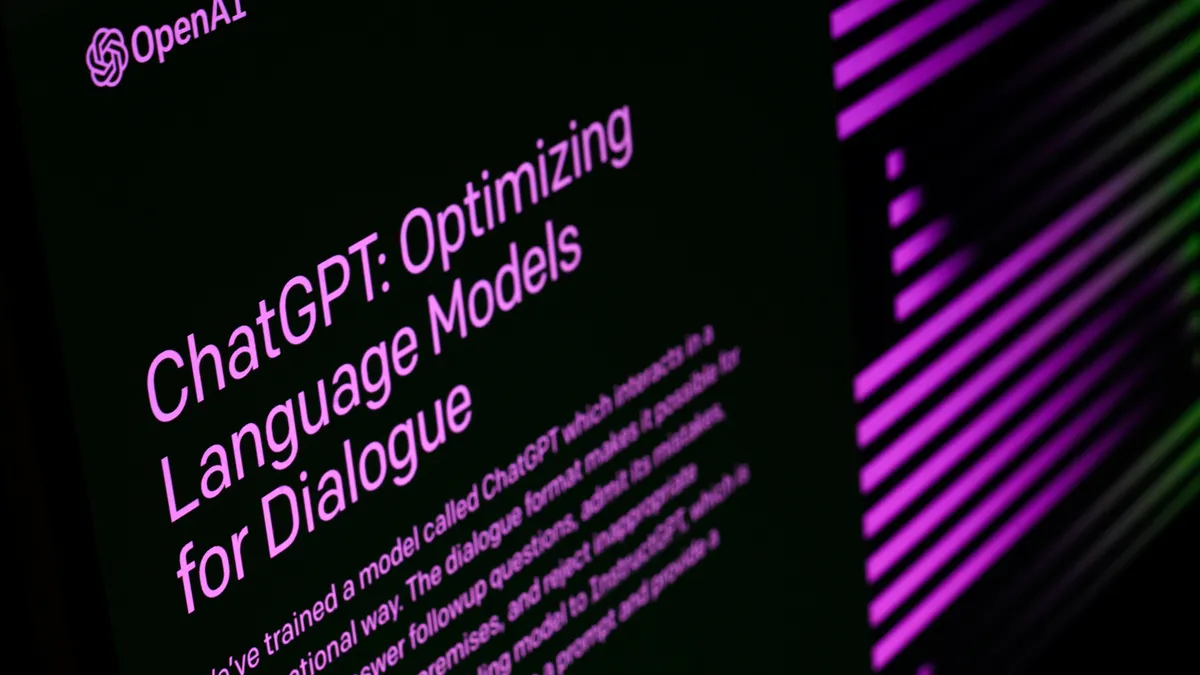Once an organization becomes successful, the good times should roll in. But that’s not always the case, as once-stable brands like Sears, Kodak and Blockbuster can attest.
Such success can also harden a company into stasis and conformity, to the point that they’ll be left behind, said John Nasr, managing director of The Miles Group, a global talent consulting firm. He previously spoke about this phenomenon with Miles Group CEO Stephen Miles on the C-Suite Intelligence podcast, and recently elaborated on it for HR Dive, describing how it specifically can affect human resources.
Editor’s note: This interview has been edited and condensed for clarity.
HR DIVE: When you talk about the “dark side of company culture,” what do you mean?
NASR: For us, culture is not something that you can readily point to or define. It’s the output of a set of behaviors and actions inside an organization. It’s tested and measured at the margins, when things get tough. When leaders have to make hard choices, that’s when culture is shaped or fortified. People define the culture for you, based on what leaders are willing to tolerate.
From that, you can have a high-performing company culture or one that drives high levels of conformity or stasis.
What’s the difference between a company reaching those two endpoints?
Culture is a Day 1 vs. a Day 2 mindset. In 1997, Jeff Bezos described Amazon as having a Day 1 mentality, and was trying to fortify a culture around this long-term, even ultra-long-term focus on innovation. In 2016, he was asked what a Day 2 mentality looks like. “Day 2 is stasis,” he said. “Followed by irrelevance. Followed by excruciating, painful decline. Followed by death. And that is why it is always Day 1.”
The “dark side of company culture” is the move from a Day 1 mindset to a Day 2 mindset. A Day 1 organization is scrappy. It is resilient. It has to put points on the board. There is a very clear mandate and purpose, and resources tend to be limited. When you get into a Day 2 mindset, it’s because an organization that had high levels of success now has more resources and more layers, and it gets focused on reinforcing what we would call the business of today.
Look at what happened to Sears, Kodak, Blockbuster. Those companies had some success, then said, “We’re the best at this. We know better. We have these moats that no one can penetrate. We’re the 800 pound gorilla.” And then what ends up happening is another company comes along and knocks them down.
What happens to an organization’s people when there is conformity and stasis?
Companies get successful, they start enjoying more results, quarter after quarter, and people start to exhibit some behaviors that I would call Day 2. They’re focusing on the business of today to the exclusion of tomorrow. They focus on repeating the same processes and rhythms. They continue to focus on what has always worked in the past, and lose the ability to have an outside-in point of view.
It’s worse if people like this don’t leave. This is where you get the Day 2, dark side of company culture. You have people who are now know-it-alls, arrogant, of a “complain and explain” culture.
The organization recognizes that it needs some change, that it needs to do something transformational, and maybe it’s not as good as it thought it was, and it needs talent from the outside. When HR is going through the recruitment and talent acquisition and onboarding process, the most deadly thing you could say about someone new is they’re not a good cultural fit. Day 2 mindset creeps in and the antibodies unite and get rid of somebody challenging the status quo.
What role does HR play in making sure companies don’t get stuck?
HR managers should understand where their business or group is, both from a revenue position and where they are in the market. If there’s a need to bring in outside talent and drive transformation, why is that? What are we doing that we shouldn’t? Let’s diagnose the business problem first, and bring in the right outside talent. Good HR managers are able to influence and partner with other business leaders to ensure we are hyper aligned about the needs of the role we’re hiring for.
How can HR managers make sure people aren’t being pushed out for challenging the status quo?
We talk a lot about DEIB — diversity, equity, inclusion and belonging. At a high level, HR managers should be ensuring that, within their business or function, they’re supporting this mindset.
When you have these large organizations, no one is 100% growth mindset, no one is 100% fixed mindset. People generally want to do a good job, and they want to add value. If they don’t feel comfortable surfacing their ideas, or feel like a leader or manager is going to say no and shoot them down, then that’s a problem. HR leaders should be giving those folks a voice, to the point where those ideas are surfaced. That doesn’t mean everything people say is going to be actioned on, but how do we create forums, and how do we create challenges, where that information is surfaced up the chain of command?
Strategy and capital allocation are important, and so is understanding the competitive landscape. But ultimately the only business you’re in is the people business. I’m a firm believer that with the right culture and right resources, you can have a competitive advantage by being able to recruit and retain the best talent. One way to do that is through the Day 1 mindset and approach.




















